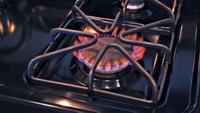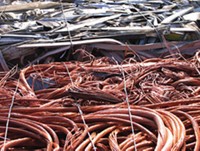Advertisement
Grab your lab coat. Let's get started
Welcome!
Welcome!
Create an account below to get 6 C&EN articles per month, receive newsletters and more - all free.
It seems this is your first time logging in online. Please enter the following information to continue.
As an ACS member you automatically get access to this site. All we need is few more details to create your reading experience.
Not you? Sign in with a different account.
Not you? Sign in with a different account.
ERROR 1
ERROR 1
ERROR 2
ERROR 2
ERROR 2
ERROR 2
ERROR 2
Password and Confirm password must match.
If you have an ACS member number, please enter it here so we can link this account to your membership. (optional)
ERROR 2
ACS values your privacy. By submitting your information, you are gaining access to C&EN and subscribing to our weekly newsletter. We use the information you provide to make your reading experience better, and we will never sell your data to third party members.
Pharmaceuticals
Newscripts
Mighty tiny, Quashing free radicals, Party pooper
by Marc S. Reisch
September 25, 2006
| A version of this story appeared in
Volume 84, Issue 39
Mighty tiny
Xerox scientists have developed a font just one-hundredth of an inch high to make it harder to forge valuable documents such as personal identification papers and checks. The microscopic font is so tiny that 26 pages of 10-point text can be squeezed onto a 5-by-8-inch card.
The Xerox font takes advantage of improvements in digital printing technology and brings the capability to print the minitext to commercial printers who buy software with what Xerox calls its MicroText.
The U.S. government already uses minuscule fonts as an anticounterfeiting measure. The dots in the border next to Andrew Jackson's right shoulder on a new $20 bill are really the teeny words "The United States of America 20 USA 20 USA." And the signature line on some personal check forms already contain the diminutive words "authorized signature" written over and over.
But combine a digital printer with the new MicroText font and others can embed microscopic type within lines, text, and images to add an extra layer of security, Xerox says.
Quashing free radicals
Sunscreens now available for consumer use are effective because they contain liberal amounts of ingredients that absorb or reflect the skin-damaging rays of the sun. However, scientists in England say they have developed a new sunscreen ingredient that actively repairs sunburned skin and helps prevent the onset of skin cancer.
Charareh Pourzand of the University of Bath, James Dowden at Nottingham University, and their collaborators are working on novel caged-iron chelators to protect skin cells against damage caused by ultraviolet A light. They recently published their work in the Journal of Investigative Dermatology and say they have two commercially attractive prototypes in laboratory trials.
Scientists think many forms of cancer are the result of reactions between free radicals and DNA. "When skin is exposed to high doses of sunlight, such as when you are sunbathing, a massive amount of free iron is released in skin cells," Pourzand says. "This free iron can act as catalysts for the generation of more harmful free radicals that cause severe cell damage." Mopping up the free iron released when the skin burns also reduces inflammation and pain.
But not just any iron chelator will do. Indiscriminate use of such chelators would starve cells, such as red blood cells, of the iron necessary for normal biological processes. So the prototypes the scientists are working on contain caged-iron binding sites that release the chelators only in response to high doses of ultraviolet light.
Party pooper
A shortage of helium, a staple of gas chromatography but also used to fill party balloons and blimps, is driving up the price of the lighter-than-air gas.
According to news reports, one overseas plant is undergoing a lengthy maintenance shutdown while two others under construction are behind schedule. In the U.S., the Bureau of Land Management, which manages and sells one-third of the world's crude helium recovered from natural gas reserves, has put off maintenance on its own equipment to avoid further disrupting supplies.
The Associated Press surveyed a number of party stores that were unaware of the shortage. However, it did find one that warned customers that it could not rent helium tanks for mass balloon fills.
Goodyear Tire & Rubber, whose blimp fleet frequently shows up high above sport events, told AP it was concerned about the price increases. The firm buys 10,000 to 20,000 cu ft annually of replacement helium to keep its airships afloat. They each hold between 170,000 and 180,000 cu ft.
While supplies of helium remain tight, only occasional users, especially those who can't resist inhaling the gas from balloons for the buoyant effect on their voices, are likely to be inconvenienced. Experts expect the shortage to be resolved by November−just in time to fill the cartoon character balloons for the Macy's Thanksgiving Day parade.





Join the conversation
Contact the reporter
Submit a Letter to the Editor for publication
Engage with us on Twitter